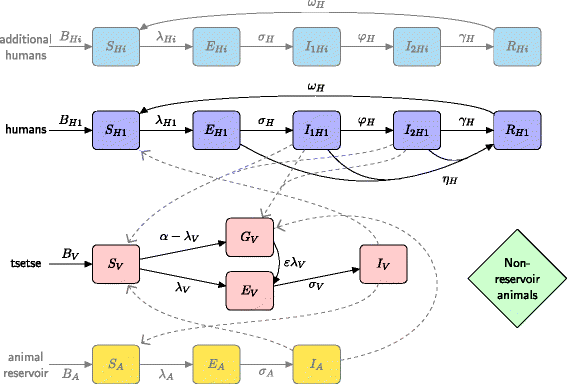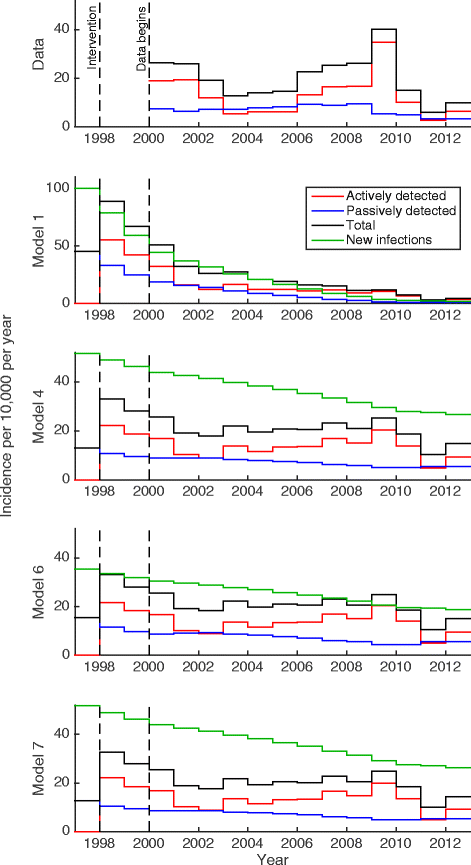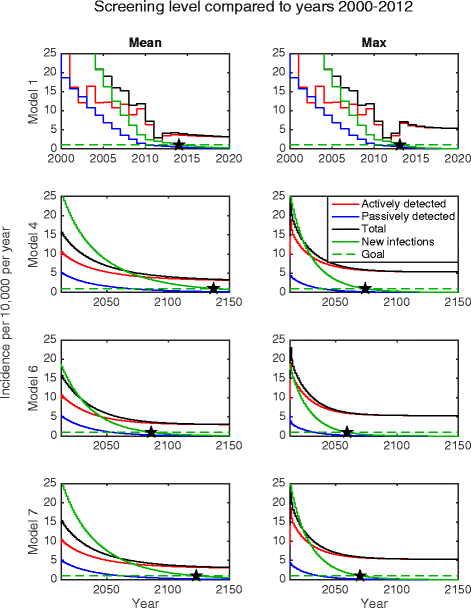Quantitative evaluation of the strategy to eliminate human African trypanosomiasis in the Democratic Republic of Congo
- PMID: 26490248
- PMCID: PMC4618948
- DOI: 10.1186/s13071-015-1131-8
Quantitative evaluation of the strategy to eliminate human African trypanosomiasis in the Democratic Republic of Congo
Abstract
Background: The virulent vector-borne disease, Gambian human African trypanosomiasis (HAT), is one of several diseases targeted for elimination by the World Health Organization. This article utilises human case data from a high-endemicity region of the Democratic Republic of Congo in conjunction with a suite of novel mechanistic mathematical models to address the effectiveness of on-going active screening and treatment programmes and compute the likely time to elimination as a public health problem (i.e. <1 case per 10,000 per year).
Methods: The model variants address uncertainties surrounding transmission of HAT infection including heterogeneous risk of exposure to tsetse bites, non-participation of certain groups during active screening campaigns and potential animal reservoirs of infection.
Results: Model fitting indicates that variation in human risk of tsetse bites and participation in active screening play a key role in transmission of this disease, whilst the existence of animal reservoirs remains unclear. Active screening campaigns in this region are calculated to have been effective, reducing the incidence of new human infections by 52-53 % over a 15-year period (1998-2012). However, projections of disease dynamics in this region indicate that the elimination goal may not be met until later this century (2059-2092) under the current intervention strategy.
Conclusions: Improvements to active detection, such as screening those who have not previously participated and raising overall screening levels, as well as beginning widespread vector control in the area have the potential to ensure successful and timely elimination.
Figures




References
-
- Uniting to Combat Neglected Tropical Diseases. London declaration on neglected tropical diseases: Ending the neglect and reaching 2020 goals. 2012.
-
- WHO. Sustaining the drive to overcome the global impact of neglected tropical diseases. Geneva, Switzerland. 2013.
Publication types
MeSH terms
Grants and funding
LinkOut - more resources
Full Text Sources
Other Literature Sources
Miscellaneous

